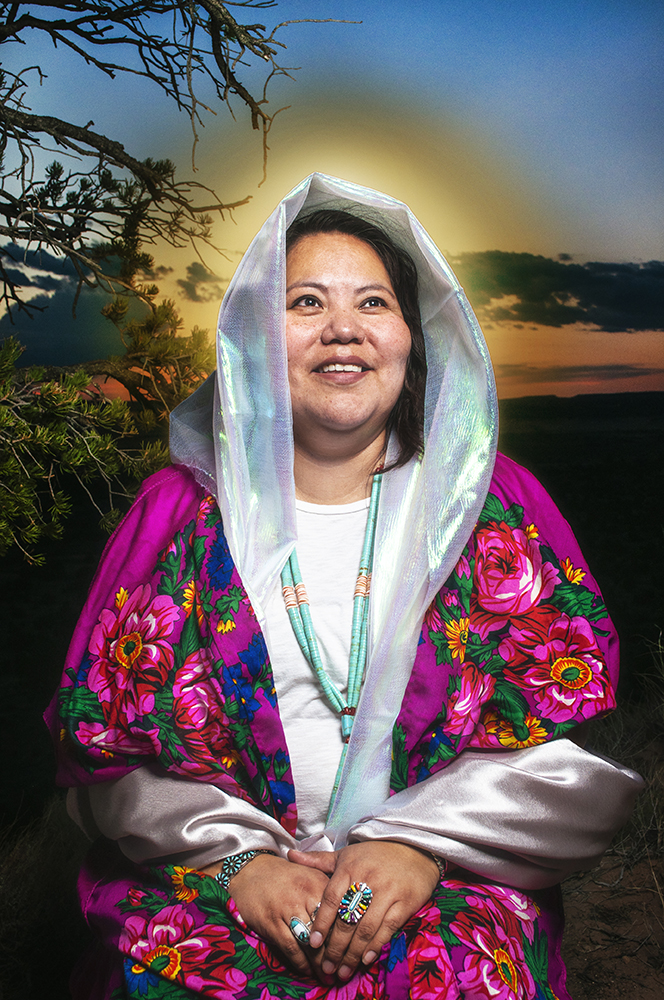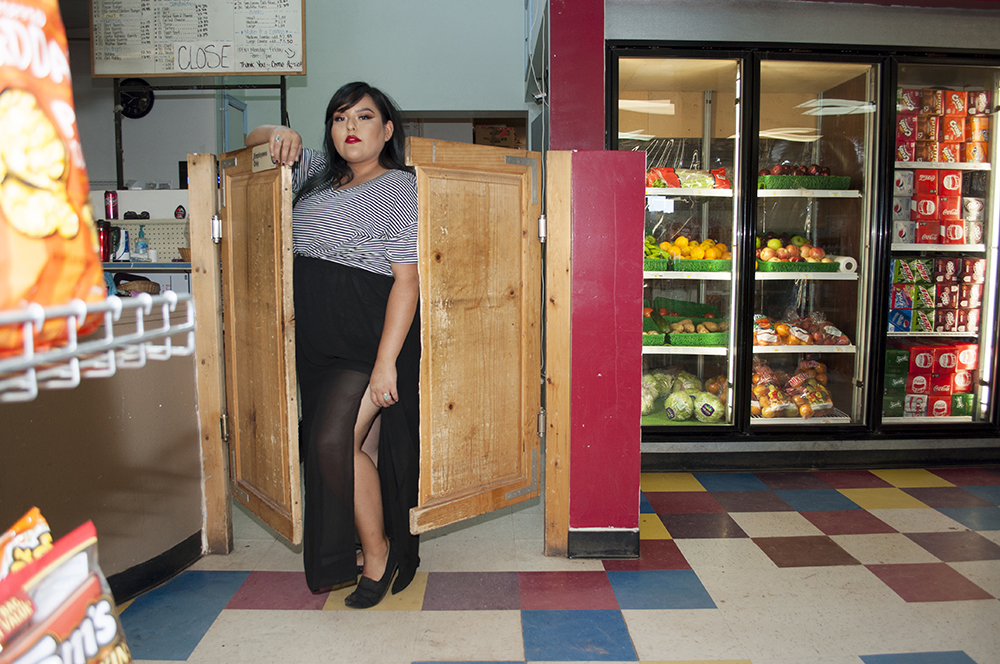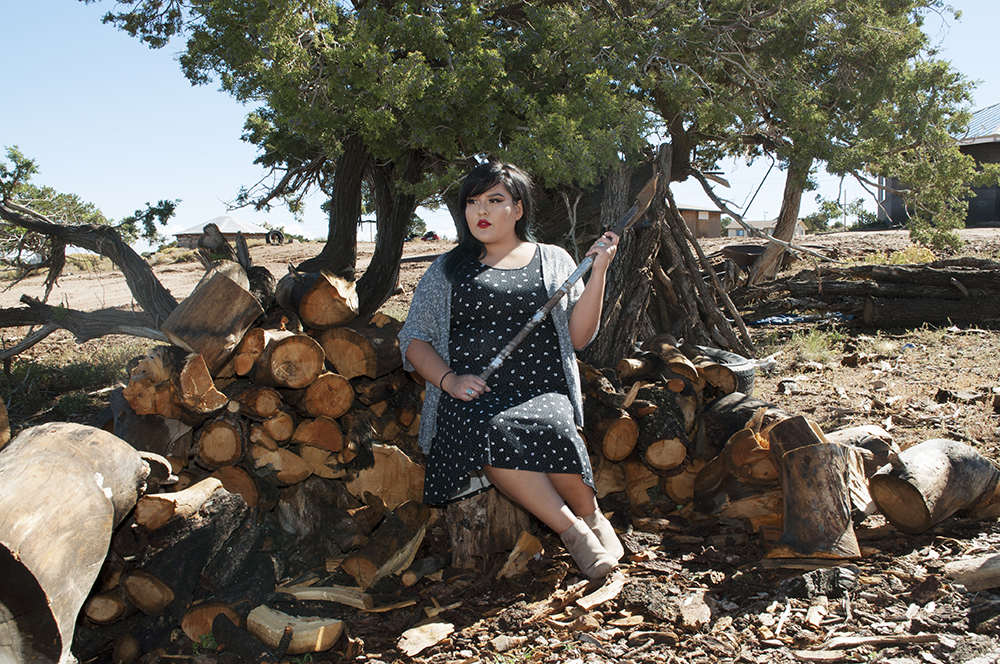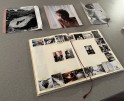Hannah Manuelito: Identities that Build a Culture
Growing up I struggled in defining who I was. I was insecure in the fact that I did not know how to speak Navajo or I was not as traditional as my family members. Although I lacked knowledge of my culture, I was also the “all knowing” native in my classes. For quite some time I was the only Native at my new school in the city. Whenever the “Old West” chapter of the history book came up, it was like I was the spokesperson for all tribes. My identity as a Diné Asdzáán began wavering when I had gone back to the reservation and was called a “City Girl” by the cashier in my hometowns gas station. I was twelve and confused, questioning what made me different from everyone else.
While studying at Arizona State University, the memory of the cashier’s comment came back to me. I had been unsettled by this mold I set for myself to fit in, a mold to be a perfect Navajo. Instead of trying to make myself be a “true” Navajo, I decided to embrace my unique identity. I created a series of self portraits called City Girl, where I set myself in various parts of my hometown and brought an overly done up version of myself to these rural locations. This self portrait series not only helped claim my multifaceted identity but also made me see photography as a tool.
I began to further my knowledge of my culture through my work as an undergraduate. For every assignment in photography classes, I would pick a part of my culture I wanted to know more about and put it into my imagery. Through various self portraits and portrait work of my family I showcase the various identities that build a culture.
My family as a whole is a constant source of inspiration. The stories they tell, the lives they’ve lived, the knowledge they share with me are key elements to my work. Sometimes I will focus on a specific creation story or an individual I admire and create a whole body of work of them. My goal is to learn as much as possible while immortalizing the teaches in my imagery. – Hannah Manuelito
Hannah Manuelito (b. 1993, Ganado, AZ) is a Fine Art Portrait Photographer based in Chandler, Arizona. She identifies as an Diné Asdzáán (Navajo Woman) and is enrolled as a member of the Navajo Nation. Manuelito was born on the Navajo reservation and raised in surrounding cities, but always returning to her homeland. Living on and off the reservation throughout her adolescent life are some of the factors that play a major role in her passion as a photographer and artist. Manuelito’s imagery emphasizes her identity as a Diné. The woven artistry of the beautiful traditional teachings from her maternal family and the chaotic beauty of city life is what influenced her vision of self identity in both realms.
Kat Davis: What’s your relationship to image making? If photography had a virtue, what would it be?
Hannah Manuelito: Image making is a tool for me to learn more about my Navajo traditions and about my family. During high school and my undergrad I tried various forms of art but did not feel at home with them, when it came to photography classes it was a different story. It was easy to express my creativity with photography, whereas with other art forms I struggled to relay my story.
HM: I think photography embodies many different virtues. It would depend on the type of photography a person does and what their work expresses. The virtue I think my work relates to is respect, due to the fact that I raked through photos of my family and my culture. In order for my subjects to trust me, I give them the respect they need to feel confident in my work.
KD: I admire that you use photography as a tool to explore, and not just document. What are some discoveries that you’ve made about your family and culture through your work?
HM: With photography I was able to realize how important my family is and how I am made up of the essence each family member. Before I thought I was always an outcast or different from everyone but then I started to see how I am actually the same as them. Taking their portraits and spending more and more time with them, I realized how close we are and to prioritize them over everything else.
HM: As for my culture, I found out how significant everything is, to respect all living things, to be mindful of all of my actions. Capturing different aspects of my culture has allowed me to slow down as well, take my time and not rush. Sitting in the few ceremonies I have and watching how everything is done, everything has its own process. A piece of medicine has to be tied a certain way while songs are being sung a certain amount of times, there are prayers you have to say exactly like the Medicine Man is saying it…there is no rushing when these sacred events are taking place. I am thankful I have been inspired to capture parts of my culture, I have definitely learned so much.
KD: In your body of work Asdzáán, you elevate the matriarchs of your family through images that are reminiscent of religious Baroque portraits. The photos remind me of paintings by Kehinde Wiley, who also uses the visual language of baroque European portraits to elevate modern Black icons. What connections are you drawing by placing modern matriarchs in these scenes? What other kinds of images do you draw inspiration from?
HM: While studying art history courses at Arizona State University, I remember how the Baroque period really captured my attention, the lighting and composition of every piece. The way my professors spoke of the religious figures I always related their qualities to the women in my family, especially when it came to the paintings of Mary. Mary was one of the most important female figures and it showed with how they draped her with lavish garments, placed her in the center of the composition and basked her in the celestial lighting. So I replicated those components and used them for the Matriarchs in my family. The women I chose to photograph have influenced my life and taught me so much, I view them the same way religious people see Mary and other Holy figures.
KD: You’re also no stranger to self portraiture. In City Girl, we see a combination of the two spaces you inhabit – modern Suburbia meets life on the Rez. How have you reconciled these differing versions of yourself? Do you eventually imagine yourself becoming one of the Matriarchs you look up to now?
HM: For so long I thought I could never be both, I almost felt uncomfortable in my own skin. If it weren’t for the assignment in my undergrad photography class I don’t think I would have ever embraced both versions fully. I remember feeling very uncomfortable getting ready the morning I planned on taking those self portraits, I had went full glam with my makeup while sitting inside my grandma’s house. Then after taking the first set of self portraits and looking at them, I knew it made sense. I fully embraced my unique qualities afterwards, not afraid to be of two worlds.
HM: Oh man, I think I would blow little Hannah’s mind if she saw what I have been able to do. Even now I think back on the last 3 years of my life and I am still shocked by some of my accomplishments and how I have grown. I don’t quite hold myself up to the women I photographed but I could imagine seeing myself that way in the future.
Posts on Lenscratch may not be reproduced without the permission of the Lenscratch staff and the photographer.
Recommended
-
Suzanne Theodora White in Conversation with Frazier KingSeptember 10th, 2025
-
Maarten Schilt, co-founder of Schilt Publishing & Gallery (Amsterdam) in conversation with visual artist DM WitmanSeptember 2nd, 2025
-
BEYOND THE PHOTOGRAPH: Q&A WITH PHOTO EDITOR JESSIE WENDER, THE NEW YORK TIMESAugust 22nd, 2025
-
Beyond the Photograph: Editorial Q&A with Photographer Tamara ReynoldsJuly 30th, 2025





















































































